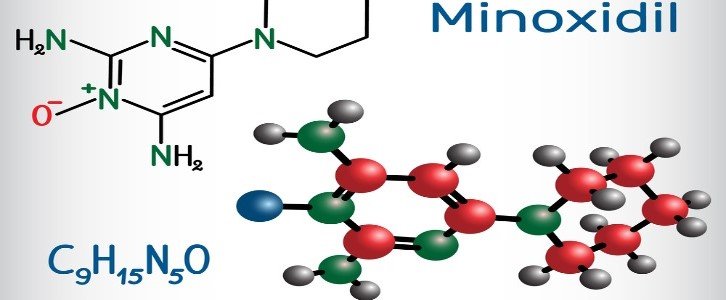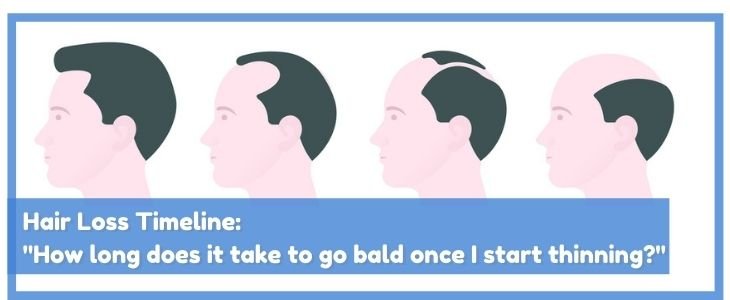People still doubt whether minoxidil is effective.
And you might even be one of them.
It’s kinda weird, right?
Just consider all the years it has been on the market and how many people have used it, yet so many people still have doubts.
I know many people who have never even heard about neither minoxidil nor rogaine– even guys who are balding.
Why aren’t more people aware of this product?
All of us wish we didn’t have to deal with a receding hairline and a thinning crown, but if we are genetically prone to hair loss it is unfortunately inevitable.
And whenever we hear about a hair loss solution on the market, we don’t know if they are trying to sell us on false hope or if it actually works. So, in order to clear up the fog of misleading information out there, let’s take a look at minoxidil and its effectiveness.
First, watch this introduction video to minoxidil:
A brief history of Minoxidil
This product isn’t exactly new; it has been going around since 1979 when the FDA approved it to be used for treating hypertension (high blood pressure).
Minoxidil started being sold to the public a year later, in the form of 10mg tablets. Curiously, one of the main side effects of this medicine was hypertrichosis (excessive hair growth in the body).
In 1988, the FDA approved the 2% topical solution (a lotion) to treat androgenic alopecia. It was sold as Rogaine. Starting from 1991, the FDA approved its use for women. However, in 1997, the FDA authorized the sale of this solution at 5%, but only for men.
How Minoxidil works
It still isn’t clear to anyone how its mechanism works. This vasodilator produces a greater blood supply, and until not long ago, it was believed that this blood “encouraged” hair growth. Since then, many other vasodilators have been used, and this theory has proved to be incorrect.
Recent studies have demonstrated that Minoxidil prolongs the survival period of keratinocytes, the most common cells in the epidermis.
Furthermore, it is favorable to the hair bulbs and epidermal cell-reproduction and acts as an agonist to the potassium channels. Supposedly, it “stimulates” their opening, preventing calcium from entering the cells directly as it is responsible for “sending” a signal to the follicles to stop growth.
Main characteristics of Minoxidil
A Minoxidil solution at 5% administrated topically – applied directly on the surface you want to treat, in this case, your scalp – serves as a treatment of androgenic alopecia. It stimulates hair growth and decreases hair loss.
The indicated dose of Minoxidil at this percentage is 1ml every day, and you should not apply more than that on a daily basis. Excess use of this substance does not provide quicker results nor “encourages” further hair growth.
Minoxidil prolongs the “anagen” phase (growth phase) and may gradually transform the miniaturized follicles into mature hair. After three months of use, many patients have observed positive effects. In the beginning, most people notice their hairline starts to grow little hairs, and after prolonged and uninterrupted use, the hairs may grow thicker and longer.
It’s also worth noting that the use of minoxidil is indefinite. If you want to see the positive effects in the long term, you need to use it continuously. Otherwise, you’re newly grown hair will fall out again. In other words, if you stop, you’ll lose all the progress within the next few months.
Also, minoxidil is not prescribed to pregnant women or lactating and those suffering from cardiovascular diseases. Sometimes, it may produce irritation and burning, but these side effects disappear once you suspend its use. If you’re taking other medications, you should consult with your physician.
How effective is Minoxidil?
I’ve read some blogs that say that Minoxidil does not work for hair growth and that it only works to make it look “better”. This is far from the truth. It does promote hair growth, but it does not protect against hair loss. Dead hair follicles can’t grow hair.
Minoxidil should be considered as a hair growth stimulant that helps your weak hair follicles to grow and hold thicker hair
It does not prevent further balding and does not protect against damage to your hair follicles caused by hormones. Therefore you should not think of minoxidil as an all-in-one hair loss solution.
Also, keep in mind that minoxidil will not be as effective if the hair loss is too severe or one’s hair has already miniaturized.
Read our other posts about how DHT damages your hair follicles to prevent or slow down further hair loss.
Even though Minoxidil is only approved as an effective product for hair loss treatment and is only meant to be used on your scalp, people also use topical rogaine to grow a beard. Myself included.
So does minoxidil/rogaine work?
Yes! It works and it is the best product that I know of and side effects are usually minimal. Of course, it does not work for everyone and your results may vary. People have different experiences and results.
I’ll show you with real documented scientific results here:
In this double-blind study, one group of people were treated with %5 minoxidil, another group was treated with 2% minoxidil, a third was treated with placebo, and the fourth group did not get any treatment.
After 96 weeks, the two groups treated with minoxidil had a roughly 20% increase in average (mean) hair weight than when the study began. The two groups left untreated or with placebo had roughly a 10% decrease in hair weight over the same period of time. And within 12-24 weeks after stopping the treatment, the minoxidil-treated groups lost hair weight to the same levels as the untreated groups.

This study also shows that even though minoxidil does not halt or prevent further hair loss. If that was the case, the treated groups would just go back to their starting hair weight. But since they lost even more hair weight than they had at the beginning, seems to indicate that there is still a hair loss process going on while using minoxidil. It works to stimulate hair growth but doesn’t prevent further damage to one’s hair follicles.
As you can see, this product isn’t a magical solution to your hair loss problem. In order to have long-term results, its use must be continuous and indefinite. Once you stop, you will lose any hair gains made.
The product stimulates inactive or weak hair follicles, but if the follicles are not there, if they are dead, or do not react to the stimulant, you won’t experience any result.
Types of Minoxidil products
Topical solution with 2%, 5% or 10%?
5% is the most common type and is usually the type recommended to men. I use 5% myself. Women may try 2%. I have seen that some brands also sell a 10% version for those who don’t experience good results with only 5%. I have not heard about many who use 10%
Brands
There are many different brands of minoxidil such as Kirkland and Rogaine. Some brands can be pricier than others, but the main active ingredient in these products is the same. I use Kirkland Foam 5% solution.
Liquid or foam?
Liquid is the most common type of minoxidil. It is considered more effective but might be more of a hassle to apply it with a dropper. Some people get very dry skin when using liquid, so if that’s the case you might wanna try only 1 month supply first to see how you respond to it.
Foam is an alternative to liquid. Many use it because it is less harsh on the skin and does not cause the same level of dryness. Some prefer it because they feel it is easier to apply foam than with a dropper. It may stick to your hair as much as it sticks to your scalp. I don’t know if that is of any problem as long as you gently massage it into the scalp with your fingertips. That’s what I do, and then I wash my hands afterward. It dries quickly but leaves my hair feeling a little bit dry or stiff like I added a tiny bit of hair product to it. But it doesn’t bother me, and nobody can tell.
Most Minoxidil-based products will grant you positive results if you dedicate enough time and effort to them.
If you’re starting a new treatment soon, you should probably use it for at least three months to start seeing results. But this varies from person to person.
And remember to only use this product under medical supervision and consult your doctor first.



